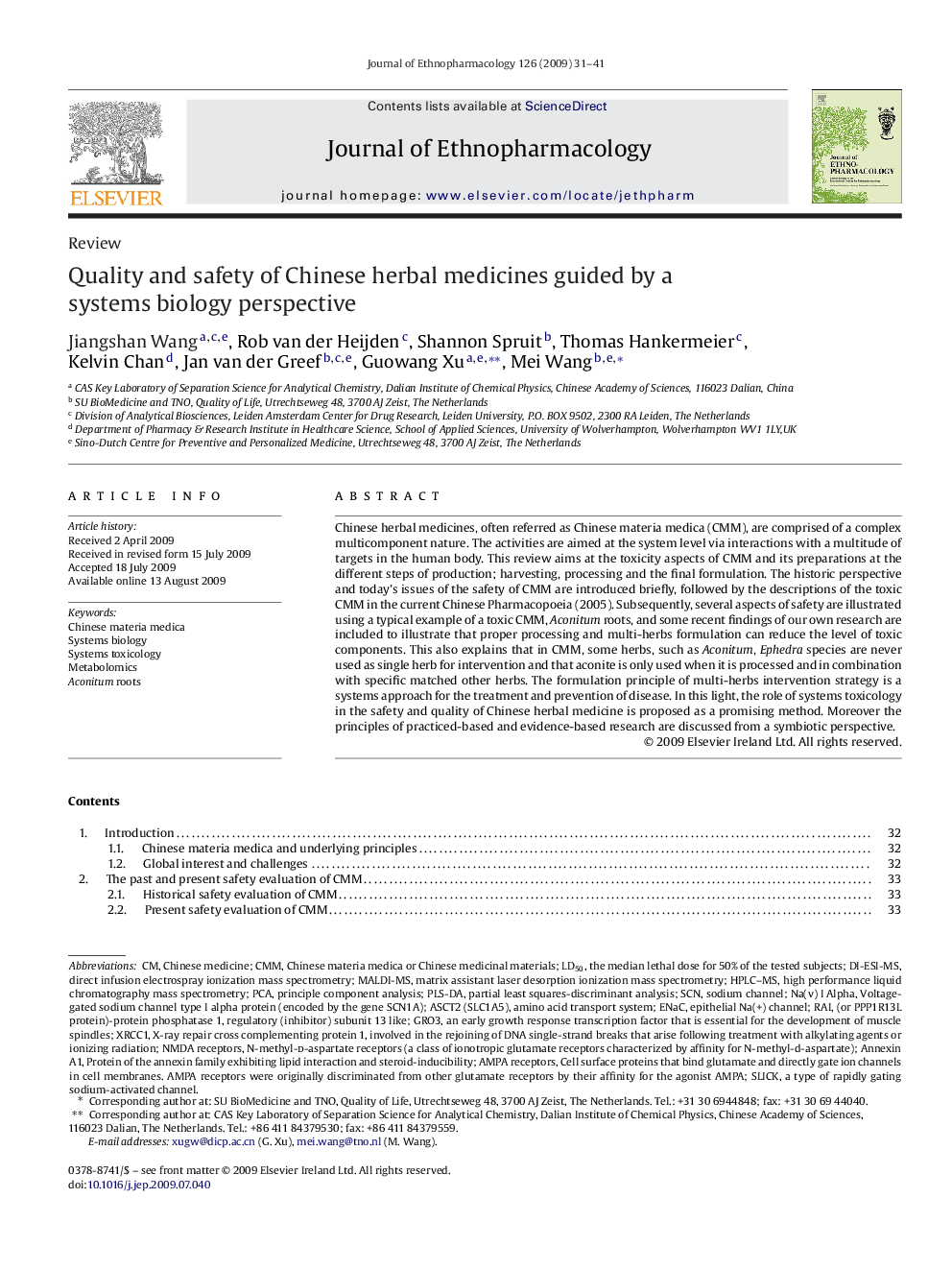| کد مقاله | کد نشریه | سال انتشار | مقاله انگلیسی | نسخه تمام متن |
|---|---|---|---|---|
| 2546673 | 1124033 | 2009 | 11 صفحه PDF | دانلود رایگان |

Chinese herbal medicines, often referred as Chinese materia medica (CMM), are comprised of a complex multicomponent nature. The activities are aimed at the system level via interactions with a multitude of targets in the human body. This review aims at the toxicity aspects of CMM and its preparations at the different steps of production; harvesting, processing and the final formulation. The historic perspective and today's issues of the safety of CMM are introduced briefly, followed by the descriptions of the toxic CMM in the current Chinese Pharmacopoeia (2005). Subsequently, several aspects of safety are illustrated using a typical example of a toxic CMM, Aconitum roots, and some recent findings of our own research are included to illustrate that proper processing and multi-herbs formulation can reduce the level of toxic components. This also explains that in CMM, some herbs, such as Aconitum, Ephedra species are never used as single herb for intervention and that aconite is only used when it is processed and in combination with specific matched other herbs. The formulation principle of multi-herbs intervention strategy is a systems approach for the treatment and prevention of disease. In this light, the role of systems toxicology in the safety and quality of Chinese herbal medicine is proposed as a promising method. Moreover the principles of practiced-based and evidence-based research are discussed from a symbiotic perspective.
The present review proposes a systems biology approach for screening extracts of Chinese herbal medicines to detect biomarkers for bioactivity in cell lines, animal models, and subsequently in human volunteers via clinical studies. The data obtained can be linked and analyzed by means of megavariate data analysis. The latter is a powerful technique that analyses data sets with a large number of variables and correlates for instance metabolomics fingerprints with a certain phenotype of bioactivity, toxicity or efficacy. Using these biomarkers or biomarker fingerprints, it is possible to offer better quality assurance and safety for herbal formulations.Figure optionsDownload as PowerPoint slide
Journal: Journal of Ethnopharmacology - Volume 126, Issue 1, 29 October 2009, Pages 31–41